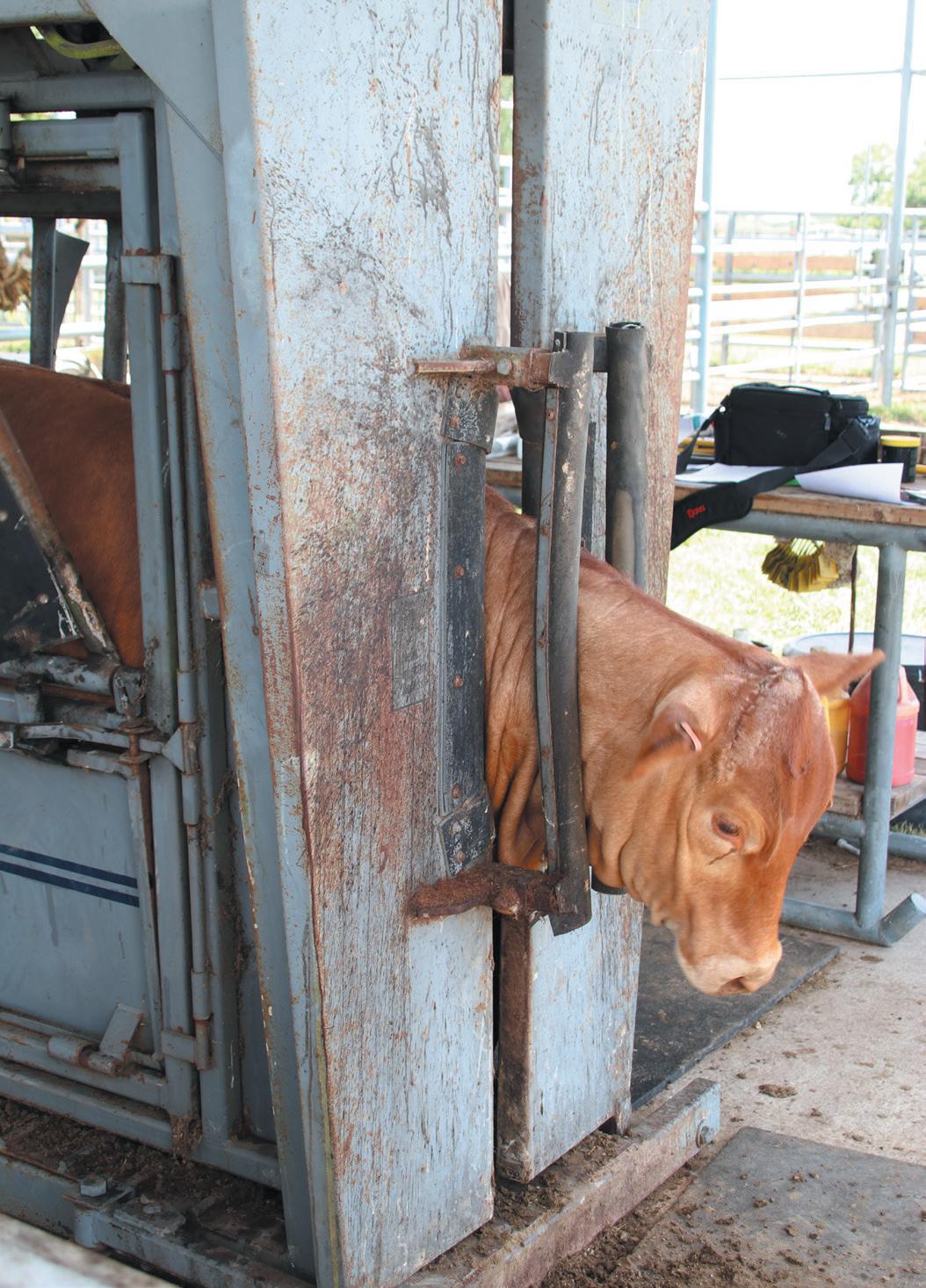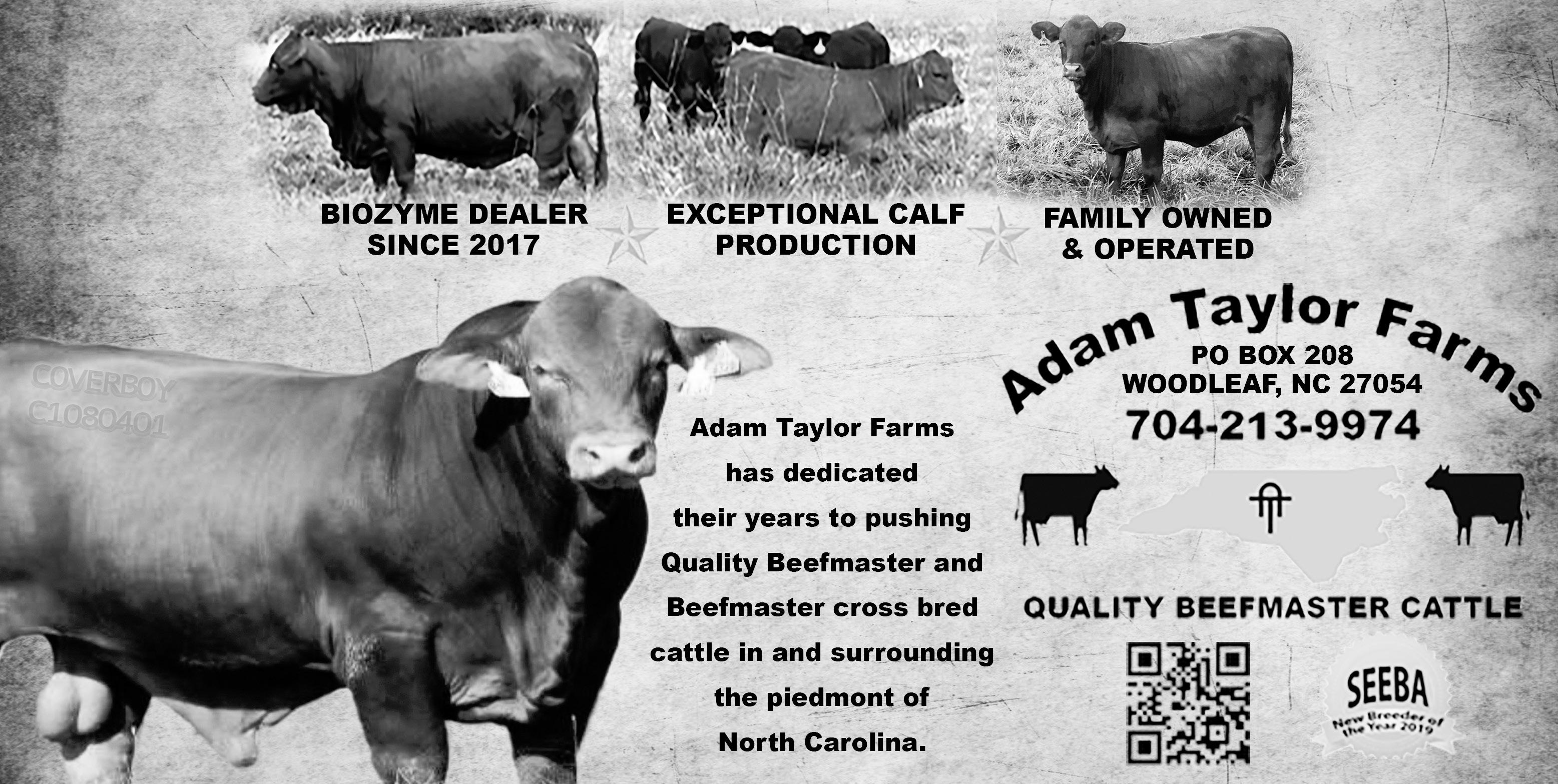
6 minute read
Beef Quality Assurance (BQA) Tips - Compiled from the Beef Cattle Browsing Newsletter by Jason Banta, Ph. D., Texas A&M AgriLife Extension
Beef Quality Assurance (BQA) Tips
- Compiled from the Beef Cattle Browsing Newsletter by Jason Banta, Ph. D., Texas A&M AgriLife Extension Beef Quality Assurance Coordinator
Advertisement
BQA does more than just help beef producers capture more value from their market cattle: BQA also reflects a positive public image and instills consumer confidence in the beef industry. When producers implement the best management practices of a BQA program, they assure their market steers, heifers, cows, and bulls are the best they can be. Today, the stakes are even higher because of increased public attention on animal welfare. BQA is valuable to all beef and dairy producers because it:
• Demonstrates commitment to food safety and quality. • Safeguards the public image of the beef industry.
• Upholds consumer confidence in valuable beef products. • Improves sale value of marketed beef cattle. • Enhances herd profitability through better management. Here are some quick BQA tips to get you started on your progam.
Do Not Mix Vaccines
When giving injections of vaccines, dewormers, vitamins, etc., it is important to never mix any products together unless they are specifically designed and labeled to be mixed. The only vaccines that should be mixed together are products that come in the same box and the label states they should be mixed together. In most cases the box will contain two bottles: one with a freeze-dried component and one with a liquid diluent. These products should be mixed according to label directions and used within 30 minutes to 1 hour. Mixing vaccines that are not designed to mix together can reduce the efficacy (immune response) of the vaccine.
Feeding Cubes
Cubes are often used to supply energy and protein supplementation during the winter. When feeding cubes on the ground it is best to feed cubes in small piles instead of feeding them in a continuous line. Feeding in small piles will reduce waste and fighting. Ideally there would be enough piles for each animal to have it’s own pile. In general, it is best to feed in troughs or at least avoid feeding on gravel or rock roads or pads as this can increase tooth wear and breaking. If feeding in bunks, make sure there is adequate space for all cows to eat at the same time.
Drought
Unfortunately dealing with drought is part of being in the cattle business. During droughts it is important to make decisions with both the short- and long-term success of the operation in mind. Take inventory of forage and feed resources and cow needs and consider if it makes sense to purchase feed to stretch supplies or if some herd reduction is needed. In most droughts early reductions in herd size are best from a financial standpoint. Regardless of what decision is made be mindful of cow Body Condition Scores and the impact it has on selling prices or future pregnancy rates.
continued on page 16
Squeeze Chutes
When giving injections it is helpful to consider how the squeeze chute is designed, so that the best access to the neck of the animal is available. Some chutes are designed to provide access to the neck in front of the headgate (e.g. squeeze chutes with neck bars), while with others the neck is best accessed from behind the headgate. After closing the headgate make sure the animal is in the best position to access the neck with the chute being used before squeezing. This may mean waiting a few seconds to allow the animal to step back or forward before squeezing.
Trace Minerals
Meeting trace mineral requirements is important for cattle performance and health. However, exceeding trace mineral needs does not result in improved performance and depending on the amount of excess can lead to death or reductions in growth and reproduction. An increasing number of deaths associated with copper and other trace mineral toxicities are showing up. To meet animal requirements and help avoid trace mineral excesses it is a good practice to only use a single well-formulated mineral supplement. Using multiple products (e.g. loose mineral supplements, mineral tubs, etc.) at the same time is costly and can lead to excess.
Read The Label
To get best response from vaccines it is important to always read and follow label directions. Don’t take for granted that you know what the label is going to say. For example, it may seem like all vaccines have a 21-day withdrawal time before slaughter there are some vaccines that have a 60-day slaughter withdrawal. Product labels can change over time so always take a few minutes to review labels of vaccines used in your operation.
Deworming
Deworming is important to maintain cattle health and performance. Timing and frequency of treatment will vary depending on geographic location, rainfall, stocking rate, age of the animal, and persistent activity of the product used. Producers in the southern United States in areas with higher rainfall and higher stocking rates may need to deworm twice a year (late-May or June and again November or December). Only one treatment may be needed in areas with 15-25 inches of rainfall and moderate stocking rates. Routine deworming might not be needed in areas with low rainfall and low stocking rates.
Cold Stress
Cold stress in cattle can reduce weight gain, pregnancy rates, and calf survival. Hay intake will increase during cold weather; providing extra hay can help reduce cold stress. Heat is produced from the digestion of hay that will help keep cows warmer. More heat is produced from the digestion of hay than the digestion of concentrate feeds. Never suddenly increase the amount of rapidly fermentable feeds in the diet (e.g. corn, soybean hull pellets, cubes, etc.) because this can lead to subacute acidosis and other problems.

Test Your Hay
Hay testing is important to determine what, if any, supplementation is needed. Hay quality can vary tremendously, so each load or cutting should be tested. Use a hay probe to collect samples from approximately 10% of the bales from each cutting. At minimum, hay should be tested for content of TDN (total digestible nutrients) and CP (crude protein). The appropriate tests can change depending on hay species, nitrate concerns, or if the hay was baled too wet. So, before sending samples to the lab, visit with a nutritionist for lab recommendations and the appropriate tests for your hay sample.
Learn More From BQA
Going through the BQA certification program adds value to your operation. The BQA certification program trains producers on what needs to be done, how it should be done, and why it should be done. State BQA programs are voluntary, locally led, and administered through organizations such as state beef councils, Land Grant Universities and state cattle associations. BQA certification is also offered online free of charge. To learn more about Beef Quality Assurance or to become a BQA certified producer, visit www.bqa.org.

Rockin’ Two Step C1097957 02/26/2017


• 2018 Beef on Forage Standout Bull
• Rated Top 10 of the BOF Sale in High Growth & Big Ribeye Area • Leader in EPDs: - Top 2% in $T, $M, WW, SC - Top 3% in YW, MWWT - Top 5%in STAY - Top 10% in REA - Top 20% in Calving Ease - Top 30% in Marbling - Top 35% in BW • Outstanding black bull of the 2019 Beef on Forage Sale - Top 4% in REA, Marbling - Top 15% in MCE - Top 20% in $M - Top 25% in $T, MWWT, MILK - Above breed average for 7 of the remaining EPDs • Semen available: contact for pricing
Dancing G’s Beefmasters
Barb & John Gillespie Moulton & Shiner, Texas John Gillespie 281.733.0656 barbnjohngillespie@att.net
Levolto
C1099830 01/14/2018




